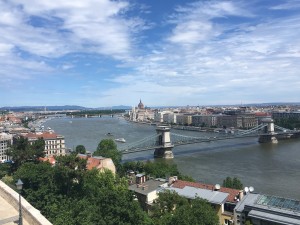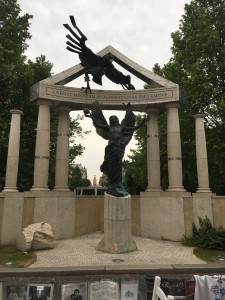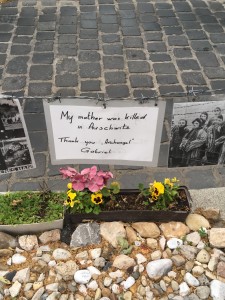Hi dear reader,
Thanks for finding your way here. I’m honored that my writing gets to be a part of your day. Broadly, this blog is a place for me to publicly reflect on my summer spent doing archival research at Stanford University, as well as in Hungary and Poland. I’m in the process of writing on Polish government propaganda’s use of Polish-West German relations in its efforts to discredit Radio Free Europe during the Cold War That’s a lot, I know, but I will save the focused historical analysis for my final article, meaning that this forum will be a place for more personal musings.
Budapest is a funky place. Parts of it seem as if they could be in any other central European capital on the well-beaten tourist track. Sweepingly grand buildings and boulevards quickly grab one’s eyes, as well as those of the masses of tourists bussed from scenic spot to scenic spot. Yet despite the similarities, Budapest is not the same as Vienna or Prague.
Politically, Hungary is under Prime Minister Victor Orban’s aspiring “illiberal democracy.” Throughout the Trump presidency, Orban has been one of the few European voices of support. He has rallied against the “unholy alliance of Brussels bureaucrats, the liberal world media and insatiable international capitalists.” Though Hungary is a member of the European Union and NATO, Orban has not shied away from cozying up to Vladimir Putin, whose rule of Russia presents an attractive blueprint for the type of politics Orban aspires to bring to Hungary. Whether such a development is possible with Hungary remaining in the EU is one of the many questions that organization faces. In recent months, the democratic world’s attention has been placed on Hungary, as Orban has targeted the Sophos Foundation-funded Central European University for its promulgation of pro-West and shared European values.
In the world of nation-states in which we live, history frequently serves a distinctly political purpose. Hungary is a particularly interesting example of this. In order to correspond to Obran’s uncompromising nationalism, Hungary’s collaboration with Nazi Germany has been whitewashed. After the government law requiring such a construction, a monument was put up in 2014 in the center of Budapest commemorating the Nazi “occupation” of Hungary (Germany and Hungary were allies in the war until 1944, when defeat to the Allies was approaching and Hungary sought out a separate peace, whereafter Hitler occupied it). In the monument, Hungary, represented by Archangel Gabriel, is shown being attacked by an eagle (Germany). As a protest, the families of Hungarian Jews killed in the Holocaust have put up a competing memorial in front of the government’s, highlighting that the real tragedy befell Hungary’s Jews (in part due to Hungarian collaboration), not the whole nation of Hungary. That this period would be remembered as anything else is taken as a direct insult to families who lost loved ones during the Holocaust, and this anger is made very public. One part of the counter-memorial simply reads: “My mother was killed in Auschwitz. Thank you ‘Archangel’ Gabriel.”
It is into this context that I am jumping into with my research. tThough I’ll be spending most of my days in Budapest reading old documents about Polish propaganda inside the Open Society Archives, and thus will not interacting with Budapest and Hungary at a very personal level, I thought it important to orient myself and whatever audience I have to the dynamics of what’ll be my home for the next while.
~Thanks for reading

 .
.





